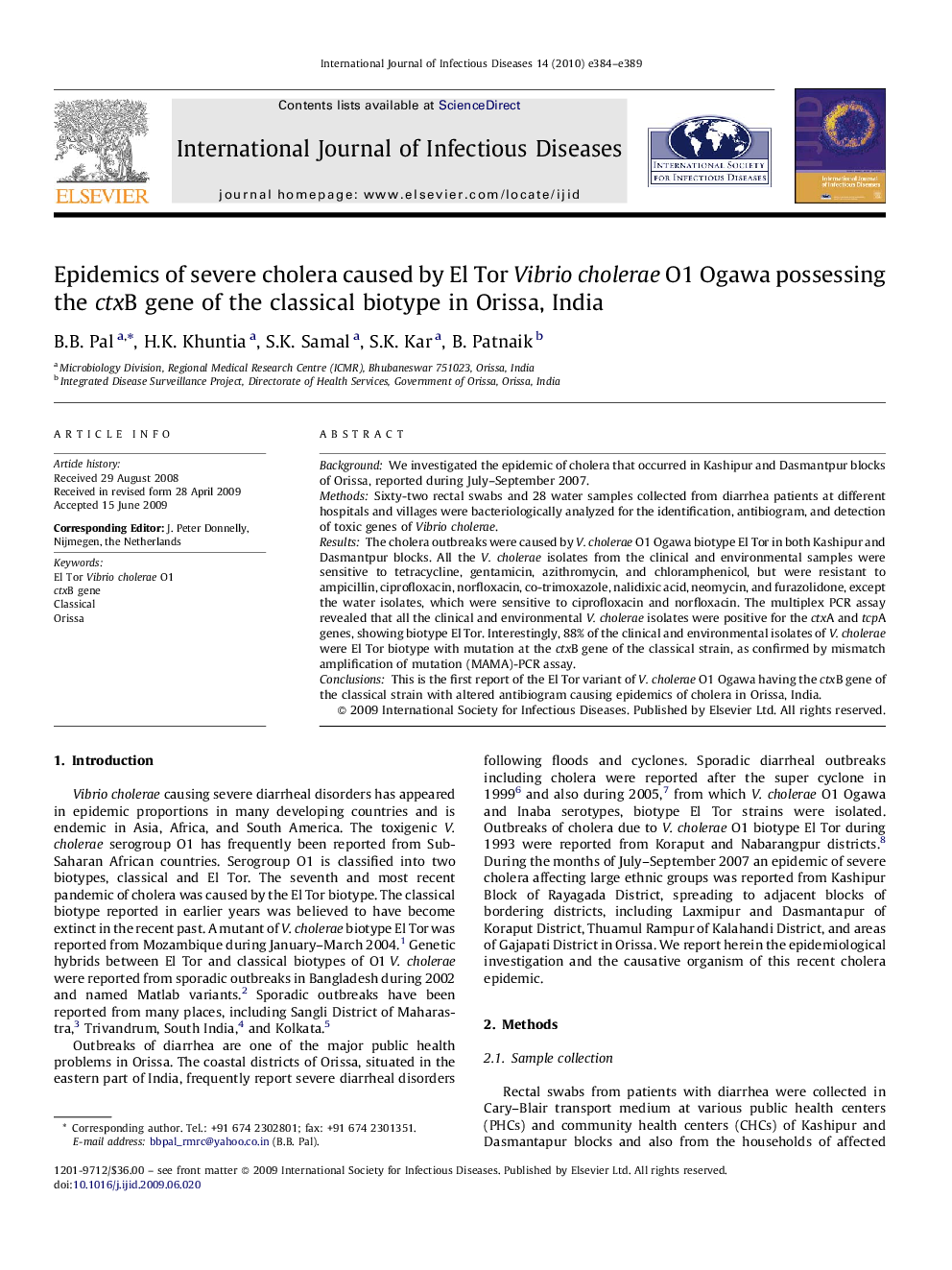| Article ID | Journal | Published Year | Pages | File Type |
|---|---|---|---|---|
| 3363665 | International Journal of Infectious Diseases | 2010 | 6 Pages |
BackgroundWe investigated the epidemic of cholera that occurred in Kashipur and Dasmantpur blocks of Orissa, reported during July–September 2007.MethodsSixty-two rectal swabs and 28 water samples collected from diarrhea patients at different hospitals and villages were bacteriologically analyzed for the identification, antibiogram, and detection of toxic genes of Vibrio cholerae.ResultsThe cholera outbreaks were caused by V. cholerae O1 Ogawa biotype El Tor in both Kashipur and Dasmantpur blocks. All the V. cholerae isolates from the clinical and environmental samples were sensitive to tetracycline, gentamicin, azithromycin, and chloramphenicol, but were resistant to ampicillin, ciprofloxacin, norfloxacin, co-trimoxazole, nalidixic acid, neomycin, and furazolidone, except the water isolates, which were sensitive to ciprofloxacin and norfloxacin. The multiplex PCR assay revealed that all the clinical and environmental V. cholerae isolates were positive for the ctxA and tcpA genes, showing biotype El Tor. Interestingly, 88% of the clinical and environmental isolates of V. cholerae were El Tor biotype with mutation at the ctxB gene of the classical strain, as confirmed by mismatch amplification of mutation (MAMA)-PCR assay.ConclusionsThis is the first report of the El Tor variant of V. cholerae O1 Ogawa having the ctxB gene of the classical strain with altered antibiogram causing epidemics of cholera in Orissa, India.
